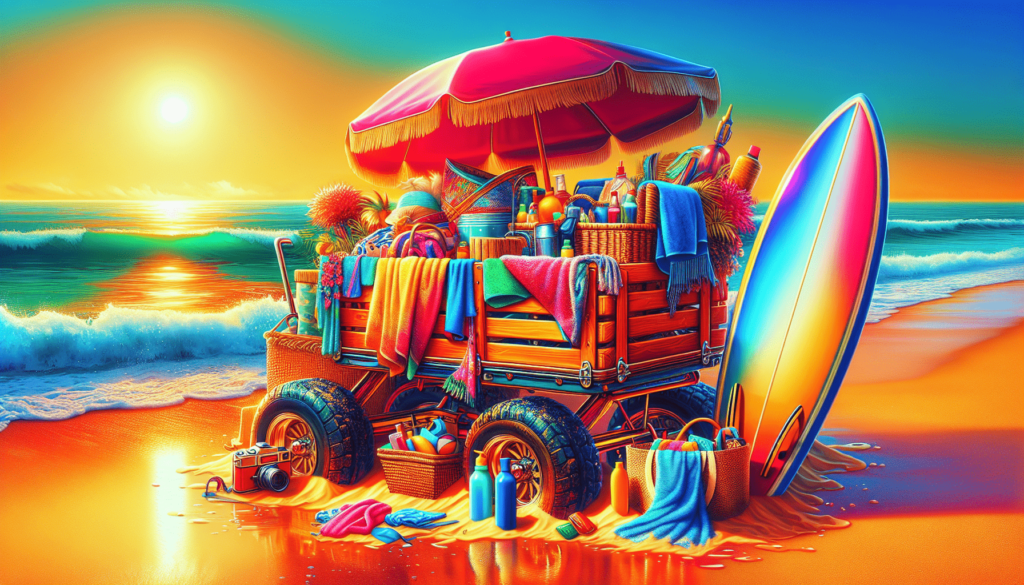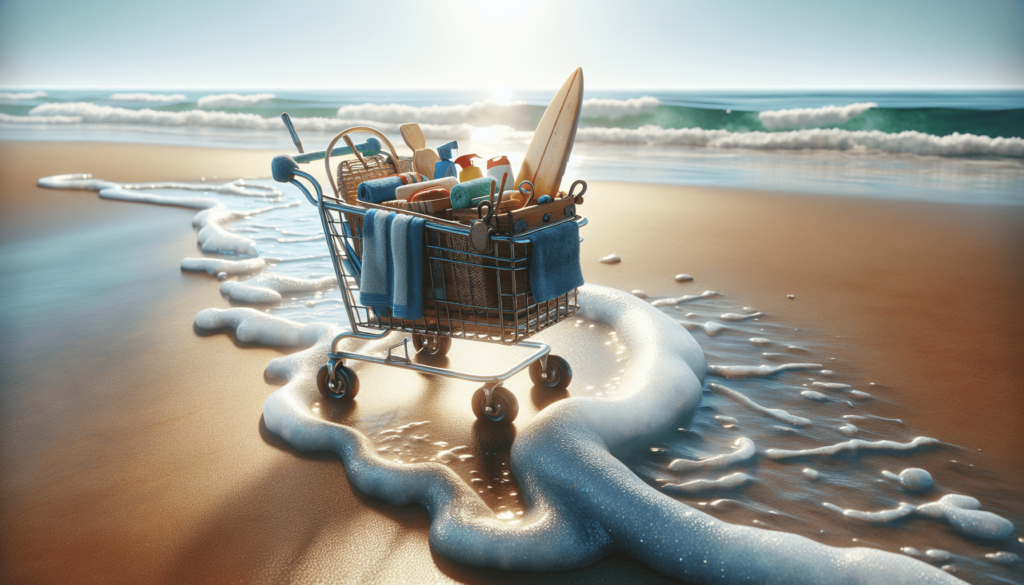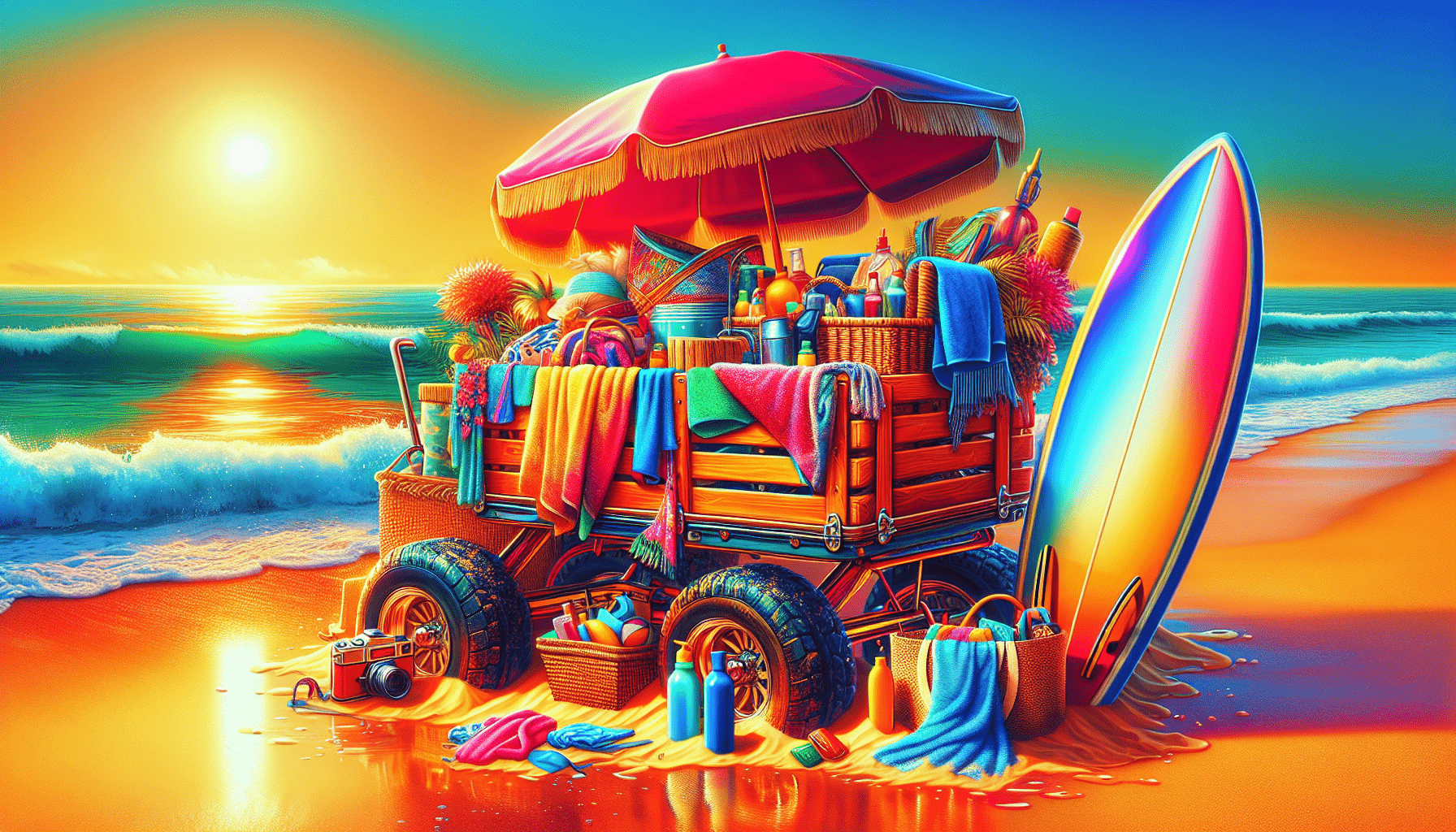Have you ever found yourself trudging across the sand, struggling to haul your beach gear to your perfect spot? Whether it’s a sun-soaked afternoon or a planned gathering with friends, lugging heavy items through the soft, shifting sands can quickly become a tiresome chore. You might be wondering—do folding beach wagons really work well on wet sand, or are they just another beach accessory that looks good on the shelf?

Understanding Beach Wagons
Folding beach wagons have become increasingly popular for beachgoers like you who want to bring everything from towels and umbrellas to coolers and chairs without breaking a sweat. They’re convenient, practical, and come in various designs to fit your needs.
What Makes a Folding Beach Wagon Different?
Folding beach wagons are designed to be lightweight yet sturdy. They usually have larger wheels and a wider base, which help prevent them from sinking into the sand, especially when that sand is wet. Their collapsible nature means they won’t take up much space in your vehicle or storage, making them a favorite among beach enthusiasts.
Key Features to Look For
When contemplating the purchase of a beach wagon, consider the following features:
| Feature | Importance |
|---|---|
| Wheel Size | Larger wheels distribute weight better and navigate sand more easily. |
| Weight Capacity | Ensure the wagon can hold all your gear without buckling. |
| Material | Waterproof fabric and rust-resistant frames will extend the wagon’s life. |
| Portability | Look for a wagon that folds easily and is lightweight. |
| Additional Storage | Some wagons come with pockets and compartments for organization. |
These elements can significantly influence how well the wagon performs on wet sand.
The Challenge of Wet Sand
Wet sand presents a unique set of challenges. Unlike dry, compact sand that offers resistance and traction, wet sand can be sticky and soft, making it harder to pull anything, including a beach wagon.
Why Wet Sand is Different
When walking on wet sand, you may notice it’s more forgiving and easier to walk on than its dry counterpart. However, this increased traction for your feet doesn’t translate to wheeled objects. A well-designed beach wagon can struggle if it’s not made for such conditions.
Typical Problems You Might Encounter
Using a folding beach wagon on wet sand can lead to several problems, such as:
- Sinking: If the wagon’s wheels are too small or not wide enough, they can sink into the wet sand, making it nearly impossible to move.
- Sticking: Wet sand may cling to the wheels, creating an unwanted drag.
- Tip-Over: Heavy or unbalanced loads can cause the wagon to tip, particularly on uneven wet surfaces.
These issues can detract from your day at the beach, so understanding the capabilities of your chosen wagon can save you from unnecessary headaches.

Selecting the Right Beach Wagon
If you’re considering investing in a folding beach wagon specifically for wet sand use, some options work better than others.
Top Wagons for Wet Sand
Certain models have features specifically designed to tackle wet conditions. Look for wagons with the following characteristics:
- All-Terrain Wheels: These wheels are thicker and designed to navigate soft surfaces more effectively.
- Wide Wheelbase: A broader wheelbase helps distribute weight and keeps the wagon from sinking.
- Durable Materials: Look for water-resistant fabrics and frames that can handle the rigors of wet environments.
Recommended Models
| Model | Wheel Size | Weight Capacity | Special Features |
|---|---|---|---|
| WonderFold Multi-Function Wagon | 10 inches | 200 lbs | UV protection, removable canopies |
| Radio Flyer Beach Wagon | 12 inches | 150 lbs | Extra-long handle, all-terrain wheels |
| Seaside Easy Wagon | 9.5 inches | 150 lbs | Lightweight, collapsible, multiple pockets |
Each of these options has garnered positive reviews from beachgoers who’ve tested them in various conditions, including wet sand.
Tips for Maneuvering on Wet Sand
Even with the right wagon, navigating wet sand requires some technique. Here are some helpful tips:
Keep the Load Balanced
Uneven weight distribution can lead to tipping or an awkward drag. Make sure your items are evenly placed within the wagon, with heavier items at the bottom and distributed throughout the space.
Use Planning to Your Advantage
If possible, try to time your beach trip around low tide when the sand is more compact and stable. Wet sand at low tide tends to be less sticky and easier to navigate.
Picking the Right Path
Before you start pulling your wagon, assess the terrain. Look for areas where the sand appears firmer. Often, the tire tracks from previous beachgoers can indicate more stable paths.
Avoid Overloading
While it might be tempting to carry everything you need for the day, consider the weight limit of your wagon. If you exceed this limit, it may become stuck or difficult to maneuver.
Storage and Maintenance of Your Beach Wagon
Taking care of your investment is crucial for ensuring the longevity of your beach wagon, especially after use on wet sand.
Cleaning After a Beach Trip
After your day out, give your wagon a thorough rinse. Don’t let sand or saltwater linger on the materials, as both can lead to deterioration.
- Wipe Down: Use a damp cloth to wipe down the frame and any heavy-duty fabric to remove lingering debris.
- Dry Thoroughly: Allow the wagon to dry completely before folding it up to prevent mold and mildew buildup.
Long-Term Storage Tips
- Store in a Cool, Dry Place: Avoid leaving the wagon in direct sunlight for extended periods.
- Keep it Folded: For those who don’t have space, collapsible wagons can be easily stored away when not in use.
By maintaining your wagon, you’re investing in future beach trips’ enjoyment and hassle-free transportation.
The Environmental Consideration
In an age where environmental awareness is paramount, consider the impact of your gear choices on natural spaces.
Eco-Friendly Options
When selecting a beach wagon, there are environmentally-friendly options that utilize sustainable materials. Look for wagons made from recycled or more eco-conscious components. Their environmental footprint can be less than standard models.
Reducing Plastic Waste
Bringing a wagon can help lessen the need for single-use items such as plastic bags. By packing your beach essentials in a wagon, you’re not only making your life easier but also contributing to reducing plastic waste.
The Community Perspective
There’s a diverse community of beach functional enthusiasts, and sharing experiences can help refine your techniques and choices.
Online Groups and Resources
Social media platforms often have groups where beachgoers share tips, share reviews, and even trade beach gear. Don’t hesitate to engage in these spaces for greater insights into utilizing your wagon effectively.
Be Mindful of Local Regulations
Some beaches have specific regulations concerning beach equipment. It’s essential to check before planning to ensure your wagon meets local guidelines.
Conclusion: Maximizing Your Beach Wagon Experience
So, do folding beach wagons work well on wet sand? The answer lies in the design and your usage. With the right model, you can glide across wet surfaces with relative ease, turning that challenging beach journey into a smooth, enjoyable experience.
Remember to choose a wagon best suited for your needs, balance your load, and make the most of technology that’s evolved to make beach outings more pleasurable. Your next beach day is about enjoying the sun, the waves, and making memories—with just a little help from the right wagon, you can focus on the fun parts.
If you keep these tips in mind, your folding beach wagon will become an essential tool for many outings to come. You deserve to enjoy the beach without the heavy lifting!

